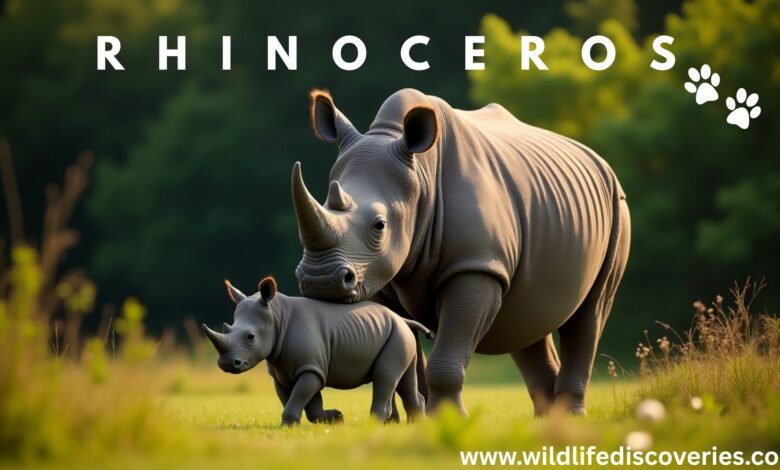
The Plight of Rhinos: Guardians of Ecosystems Facing Extinction
Rhinos are among the most iconic megafauna on Earth, yet they are teetering on the brink of extinction. Once numbering over 500,000 in the early 20th century, their population has dwindled to under 28,000 today . This dramatic decline is primarily due to poaching, habitat loss, and human-wildlife conflict. Understanding their ecological importance and the urgent need for conservation is crucial.
Ecological Significance of Rhinos
Rhinos play a vital role in maintaining the health of their ecosystems. As megaherbivores, they graze on grasses and shrubs, preventing overgrowth and promoting biodiversity. Their feeding habits create open spaces that benefit other species, including antelopes and birds. In Africa, rhinos help sustain the savannahs and woodlands, which are home to numerous other animals .
In Asia, particularly in India and Nepal, the Indian rhinoceros contributes to the health of grasslands and wetlands. These habitats support a variety of wildlife and are essential for maintaining ecological balance.
Threats to Rhino Populations

Poaching and Illegal Trade
Poaching remains the most significant threat to rhinos. Rhino horns, made of keratin—the same substance as human hair and nails—are falsely believed to have medicinal properties in some cultures. This misconception fuels a black market primarily in Vietnam and China, where rhino horn is sold at exorbitant prices .
Despite international bans, demand persists, leading to the deaths of approximately one rhino every 15 hours . In 2023, at least 586 rhinos were poached in Africa, marking a 4% increase from the previous year .
Habitat Loss and Fragmentation
As human populations grow, rhino habitats are increasingly encroached upon. Agricultural expansion, urban development, and infrastructure projects fragment their living spaces, making it difficult for rhinos to find food, water, and mates. This isolation can lead to inbreeding and weakened genetic diversity, further threatening their survival .
Conservation Efforts and Success Stories
Despite the challenges, concerted conservation efforts have led to some positive outcomes. In Kenya’s Ol Pejeta Conservancy, scientists have successfully created embryos of the northern white rhino using in vitro fertilization (IVF) techniques . While the last two known females cannot carry pregnancies, these embryos offer hope for the species’ revival through surrogate mothers.
In South Africa, Kruger National Park has implemented measures such as dehorning rhinos, enhancing surveillance, and improving ranger training. These strategies have contributed to a decline in poaching incidents within the park.
How We Can Help?
Conservation of rhinos requires a multifaceted approach:
- Support Anti-Poaching Initiatives: Contribute to organizations dedicated to protecting rhinos, such as the International Rhino Foundation and WWF. These groups fund ranger patrols, surveillance technology, and community education programs.
- Promote Awareness and Education: Educate communities about the ecological role of rhinos and the dangers of the illegal wildlife trade. Awareness can reduce demand for rhino horn and foster support for conservation efforts.
- Support Sustainable Tourism: Engage in eco-tourism that benefits local communities and provides financial incentives for wildlife conservation. Responsible tourism can create jobs and promote habitat preservation.
- Advocate for Stronger Legislation: Support policies that strengthen wildlife protection laws and ensure strict enforcement against poaching and illegal trade.
Conclusion
Rhinos are not just majestic creatures; they are integral to the health of their ecosystems. Their decline signals broader environmental issues that affect biodiversity and ecological stability. Through collective action—supporting conservation efforts, raising awareness, and advocating for policy change—we can help secure a future for rhinos and the ecosystems they sustain.




